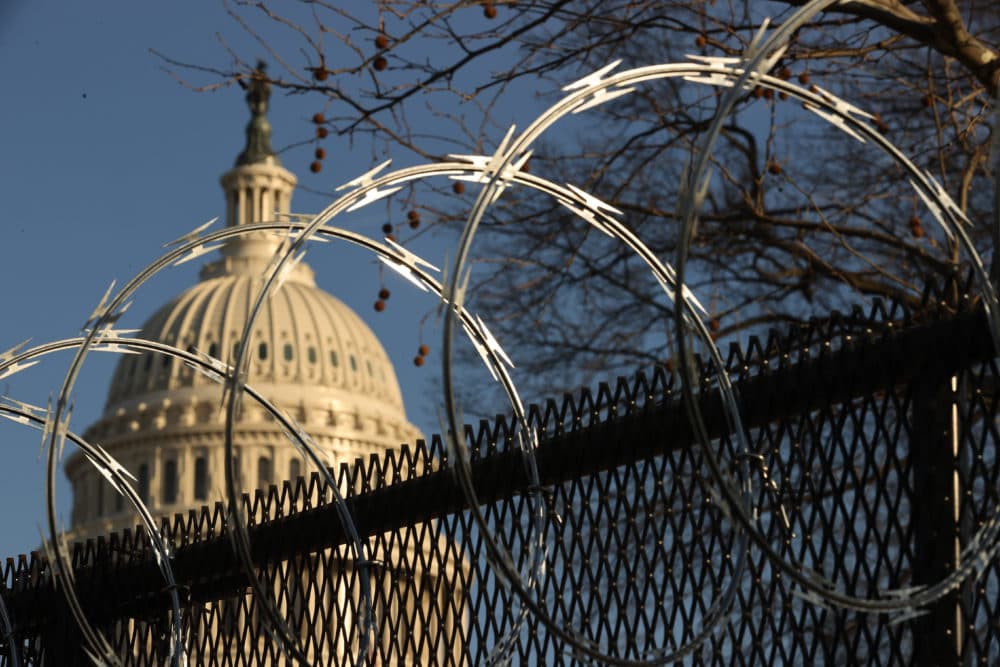Advertisement
In 2009, A Former DHS Official Warned About Rising Far-Right Extremism. His Fears Have Materialized
Resume
The Department of Homeland Security has issued its first national terrorism bulletin in more than a year warning of the potential for more violence following the Jan. 6 riot at the U.S. Capitol.
Daryl Johnson, a former intelligence analyst for the Department of Homeland Security, warned about the threat of right-wing extremism more than a decade ago in a 2009 report. Now, he says political violence could worsen unless the government does something about the danger.
At the time of the report, Barack Obama had recently been elected as the first Black president of the U.S. — “white supremacist nightmares come true” for some, Johnson says. The unprecedented election coupled with economic downturn gave both white supremacist and anti-government groups the opportunity to recruit and radicalize people, he says.
Far-right extremist movements share common grievances, he says, such as believing in conspiracy theories about Jewish elites or the 1% controlling the government.
“There's this fear and paranoia that surrounds these types of uncertain times,” says Johnson, now head of the security consulting firm DT Analytics. “And people tend to blame all kinds of scapegoats for their problems, whether it be immigrants taking over or jobs going overseas.”
The 2009 report pointed to returning veterans as a potentially easy target for right-wing extremists and received criticism from Republicans and veterans groups after it was leaked. Ultimately, then-DHS Secretary Janet Napolitano apologized for the references to veterans, and the report was retracted.
The DHS saw extremists targeting veterans for recruitment in the early 1900s, Johnson says. The report predicted the pattern would repeat with veterans returning from Iraq and Afghanistan at that time. And now in 2021, some veterans participated in the insurrection at the Capitol.
“In no way was our report meant to slander veterans,” he says. “We were just merely pointing to the fact that some veterans could be ripe for recruitment and they have a unique skill set that could boost the violent capabilities of white supremacists and anti-government groups.”
The political backlash that followed the report sent the message that calling attention to far-right groups meant there would be “hell to pay” — piles of Freedom of Information Act requests, calls from citizens, letters from legislators and people’s jobs in jeopardy, he says.
This politicization goes against intelligence standards of unbiased and objective analysis, he says.
In 2009, Johnson says his work concerned mass shootings, police ambushes, bombings and arson attacks against religious communities. He never envisioned a riot at the U.S. Capitol at that time. Security breaches at the statehouses in Idaho and Michigan at the end of last summer led him to believe a state capital could see an insurrection, but not in Washington, D.C., he says.
Johnson says he supports a “balanced approach” to looking at right-wing and left-wing extremists.
“The far left has engaged in property destruction, they've targeted the police, but it hasn't risen to the level of deadly violence that we see from white supremacists and even militia groups plotting to kidnap governors and assassinate political figures,” he says. “So there is no apples to apples comparison.”
Over the past decade, the threat of domestic, homegrown terrorism has far surpassed that of ISIS or al-Qaida sympathizers in the U.S., Johnson says. However, the intelligence and law enforcement communities overwhelmingly focus on foreign terrorism and sympathizers inside the country, he says.
“Here within, when we talk about white supremacists and anti-government extremists, there's very few analysts and agents working these issues,” he says. “And there just needs to be a balance of resources. Let the threat dictate the amount of resources and money that go into these programs.”
President Biden is taking productive steps to address domestic terrorism by asking the intelligence community for a thorough threat assessment, he says. And legislation such as Sen. Dick Durbin’s Domestic Terrorism Prevention Act is needed to end the “bureaucratic infighting” and “jurisdictional turf battles” burdening federal agencies, he says.
Samantha Raphelson produced and edited this interview for broadcast with Todd Mundt. Allison Hagan adapted it for the web.
This segment aired on February 2, 2021.

